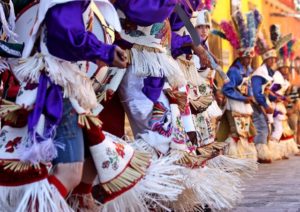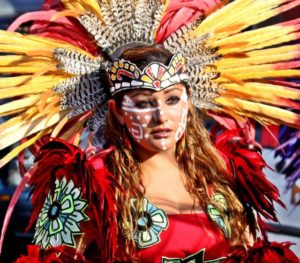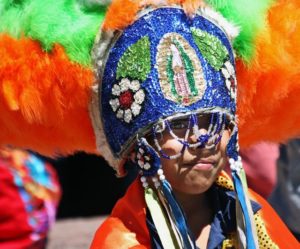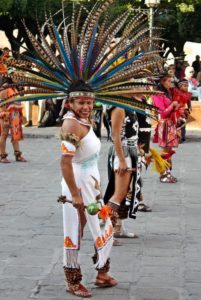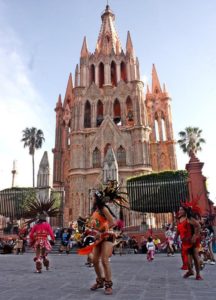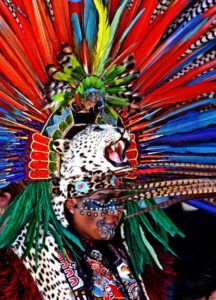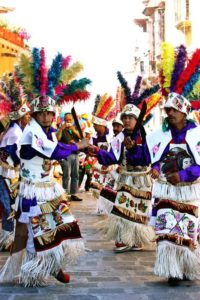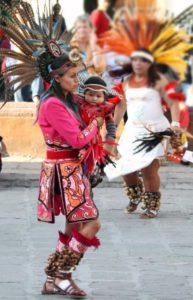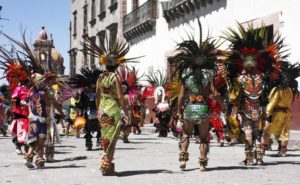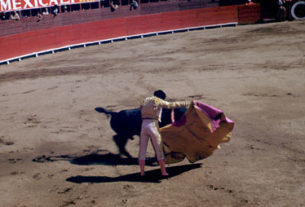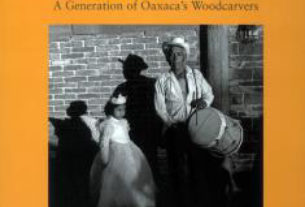Celebrations for El Señor de La Conquista (The Lord of the Conquest) completely filled the Jardin Principal of San Miguel de Allende, Mexico. Hundreds of colourful conchero or “Chichimeca” dancers dressed in pre-Hispanic style outfits arrived from the surrounding towns, representing different styles of dance and dress. Flashes of colour. Hypnotic drum beats. The shake, shake, shake of rattling shells on the legs of the dancers and the scent of burning copal were sensory treats that went along with this high-energy event.
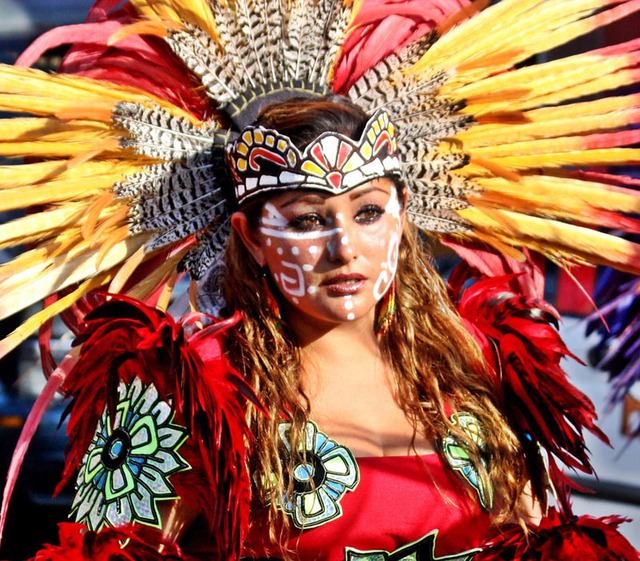
This annual festival takes place on the first Thursday and Friday of March in honor of “Christ of the Conquest,” a highly revered statue made out of corn stalks and orchid bulbs. According to legend, the image was originally made in the 16th century to represent the acceptance of Christ by the indigenous peoples. It now holds a place of honor in the impressive pink Baroque Parroquia in the center of San Miguel de Allende. Those who enter the Parish on this day commonly recite 33 prayers — one for each year of Jesus Christ’s life.
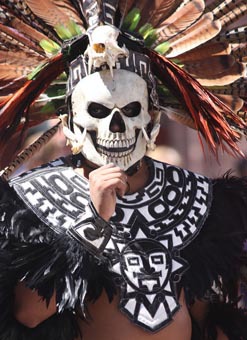
The conchero dancing originally emerged as a way of preserving indigenous heritage after the Catholic conquest in Mexico. While the Spanish attempted to eliminate all pagan traditions and ceremonies, the dancing could not be quelled, proving once again the power of music and dance. Instead, it was incorporated into Catholic holidays, resulting in many traditions still celebrated today that show a heavy mix of Catholic and pre-Hispanic influences.
The conchero dancers get their name from the stringed instrument similar to a lute that is used in the dance ceremonies — and often made out of armadillo shell.
The term “Chichimeca” was originally used by the Nahua people to refer to the various nomadic bands and tribes of Mexico and the Southern US. The Spanish adopted the term and used it in a more derogatory way, meaning something along the lines of “wild savages.” This was due mostly to the fact that the Chichimeca (who were a collection of different individual tribes) put up fierce resistance to the Spanish invasion and their quest for silver in the areas where these nomadic peoples hunted and camped. Today, the word Chichimeca refers more to a specific indigenous group living throughout the state of Guanajuato, but is also used by some danzante groups. These dancers strive to revive and preserve the dress and rites as they were in Mexico’s pre-Hispanic days, thus eliminating the European aspects seen in other dances.
While the outfits worn during the festival are inspired by the dress of their indigenous ancestors, modern colours and materials are heavily integrated. It is not uncommon to see a mixture of animal hides with neon plastic fringe.
Some of the danzantes, however, take pride in donning only attire that their forefathers would have used in their ceremonies centuries ago. Elaborate headdresses with exotic feathers and even a jaguar’s head make up some of the more impressive regalia.
The dances all hold symbolic meaning. They are somewhat difficult to understand for those unfamiliar with the individual legends, beliefs, or the complex history. While honoring Catholic images of Jesus and the Virgin Mary, some of the dancers also represent the indigenous resistance and the oppression by the Spanish. Some groups have more European and Catholic influence in their dance while others will incorporate only pre-Hispanic dress and ritual. The contrasts and contradictions highlight the complexity of having ancestors who were both the conquerors and the conquered.
Creative Interpretation is also evident. One dance starred a man wearing mirrored sunglasses and what looked to be a Saddam Hussein mask. A child followed him in a Mexicanized Hitler costume. They both carried whips and bullied the other dancers, who were dressed in tribal regalia (some including images of the Virgin of Guadalupe on their headpieces). The tribe fought back with a beautifully choreographed sword fight. I assumed that they were representing the Chichimeca resistance during the Spaniards’ conquest but I was unsure as to what exactly was going on!
In another group, a man dressed as a bull fought against matadors (on tiny wooden horses attached to their pants), and dolled-up drag queens. Again, I did not quite follow the story behind this but it was fascinating to watch!
One of the reasons that Mexican festivals are so interesting is the great mixture of customs and influences that they represent, often through contradictions and overlaps. This festival had obvious age-old indigenous and Catholic aspects, but also showed modern-day global elements haphazardly mixed in. And, like any good fiesta, a little bit of unexplained kitsch was thrown in for good measure!


